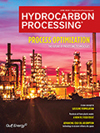Case study: Causes and countermeasures of a wall tube leak accident by an SNCR solution of a CO boiler in an RFCC process
Residue fluid catalytic cracking (RFCC) is a process that cracks heavy oil into light oil, such as gasoline, with zeolite catalysts.
IP: 3.129.21.240
The Authors
Lee, S. - SK Energy, Ulsan, South Korea
Sang-Mo Lee has more than 26 yr of experience as a Fixed-Equipment Engineer at SK Energy. His main tasks include root cause analysis (RCA), troubleshooting, fitness-for-service (FFS) evaluation, maintenance procedures and technical support for the refining and petrochemical business. He earned a BS degree in mechanical engineering, and is qualified as a professional engineer for welding and metallurgy by the South Korean government.
Seok, W. - SK Energy, South Korea
is a maintenance and detailed design engineer at SK Energy in Ulsan, South Korea. He has over nine years of experience in static equipment maintenance and engineering, especially within RFCC plants. He has a BS degree in mechanical engineering from the University of Ulsan in South Korea.
Related Articles
From the Archive







Comments